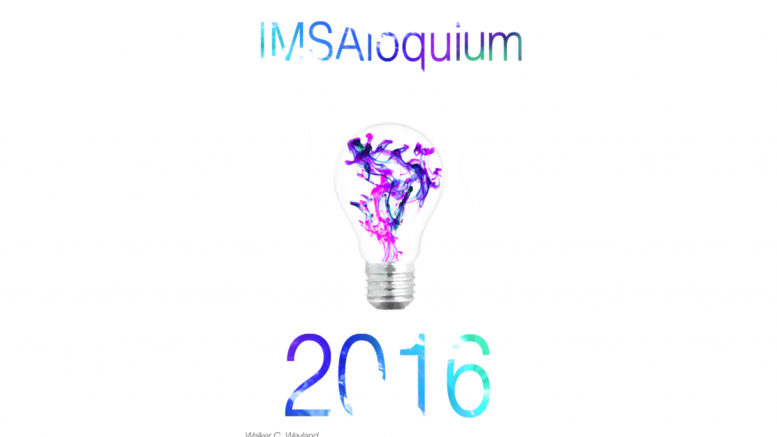With Dr. Kazadi as the new head of IMSA’s SIR program, the prospects for this year’s IMSAloquium are soaring. IMSA students will be discussing their investigations from either last summer, this past academic year, or both (for some ambitious students did two investigations). This exposition is a culmination of the efforts of both the students and their advisers.
Specifically, a student will try to summarize their work in a 15 minute presentation to an evaluator and an audience, often including their project advisers, who are experts in the student’s presented field — a nerve-wracking and exciting experience all at once. Example presentation topics range from Bayesian statistics to far-away quasars to artificial intelligence. Some projects even focus on investigations in economics or history.
The eclectic nature of a student’s audience, however, is perhaps the greatest challenge they are likely to face and is also the greatest concern of Dr. Kazadi. In order to present at IMSAloquium, every student had to give a complete practice speech in front of an SIR program staffer. Moreover, each student was required to attend at least 5 other presentations and ask questions. The most frequent criticism given by Dr. Kazadi to students during this years’ practice sessions was that the presentations were too complex for a general audience.
In fact, Dr. Kazadi admirably prioritizes the telling of a story over the use of scientific jargon. Ultimately, the objective of the presentation is not to impress the audience but to help them understand it. This distinction is not always intuitive to IMSA students, who by the time of presentation are so accustomed to their investigations that they may not even notice that their language is simply too esoteric to understand.
Perhaps this reevaluation in the presentation style sheds new light on the greater purpose of science itself. Although it may not mean that research papers will be re-written in layman’s terms, certainly presentations in a public context should be. And while some communities struggle to even create a foundational interest in STEM, IMSA struggles to sell it.
“Selling” STEM education for high school-aged students is precisely the mission of IMSAloquium. Beginning as early as 8 am and lasting until 3, attendees are given the opportunity to watch whatever presentations they desire. Sophomores, although not required to attend (like they were last year), should still watch the presentations they expect to find interesting in order to increase opportunities to network in fields of interest to them and understand the complex beauty of SIR firsthand.
Without Dr. Judith Scheppler, the former head of SIR, IMSAloquium will naturally be different. However, the passion and drive of IMSA students to change the world with their work remains constant. Simplifying science with a story, as Dr. Kazadi would put it, allows a presenter to do justice to their work by teaching an audience, not simply showing off.
The feature image for this story is the cover of this year’s abstract book, designed by Walker Weyland (’17). For the full abstract book, head to https://www.imsa.edu/sites/default/files/upload/imsaloquiumabstractbook2016.pdf


Be the first to comment on "SIR head leads change to SIR presentations"